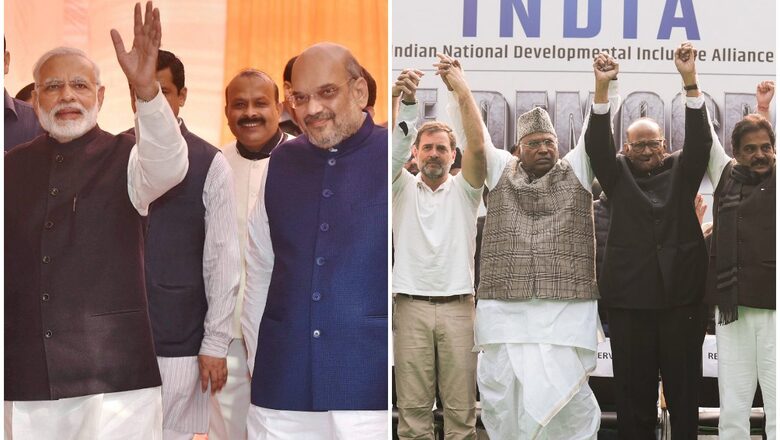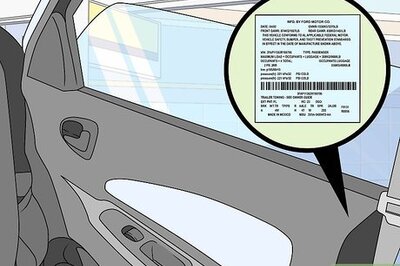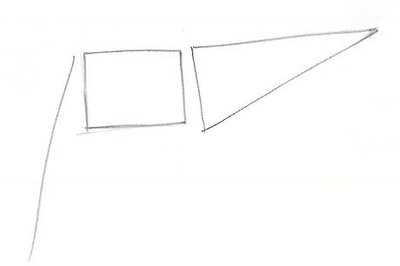
views
We, the people of the largest democracy, need a strong Opposition, one which has eluded us since the ascent of Modi in 2014. Does the INDI Alliance’s proposal for pitching Mallikarjun Kharge as the PM candidate against the super-towering two-time incumbent Modi has adequate pan-India appeal? Perhaps the answer lies embedded in my question. Worse still, if the Opposition alliance goes into elections without a pre-poll prime ministerial face, who then, as a voter, am I voting for?
Political marketplace in India shrinking since 2014
In the largest and one of the most mature democracies of the world, 76 years after independence, one would have thought that the political marketplace would be highly crowded and competitive, one that offered voters multiple electoral choices for national leadership. After all, the prerequisites of vibrant democracies rest on a free press, conducting free and fair elections, and also require a formidable and strong Opposition to checkmate and constructively critique the ruling dispensation.
Why then are we not spoilt for choices in terms of options for an alternative to the Modi-led NDA?
The ‘variables’ for 2024
If there is one certainty, it is that the BJP is a front-runner for the 2024 Lok Sabha elections.
What remains the ‘variables’ of the outcome are:
- By how many seats will the BJP surpass its earlier tally of 303?
- How much will the ‘Index of Opposition Unity’ matter this time?
- While there is presently no ‘Modi-wave’ as in 2014, there is heavily loaded pro-incumbency towards the ruling regime. However, post the opening of the Ram Mandir in January, how much of an ‘incremental bump-up’ can it give to the BJP?
- Given that in 2019, the BJP-led NDA had more allies, and given that BJP achieved near saturation in the populous Hindi heartland states, what is the potential of expanding its footprints in other electorally important states of Bengal, Bihar, Maharashtra and Karnataka?
- BJP targets the ‘first-time voter’, who would have been exposed to the current regime for 10 years of his life, before turning 18, which is the voting age. What recall would he have of the Congress-led years?
Anomalies of choosing Kharge as PM contender
While the Congress remains the largest entity and the glue that binds the coalition bloc, it is not Kharge, but the Gandhis centrality within the Congress, and outside of it, that continues to dominate the ‘alternate political space’ to Modi. Will there be a consensus amongst the allies then to accept the Gandhis as the de facto head of the alliance?
In a country where 65 per cent of the population is below 35, a statesman-like figure lacking administrative experience and pan-India recognition cannot enthuse or connect with an aspirational New India. While projecting Kharge as the possible PM face of the alliance will deflect criticism of ‘pariwaar-varad’, he will always be perceived as a proxy to the writ of the Gandhis.
The BJP will then revert to its tried and tested winning formula to make it a Modi versus Rahul contest.
State of battle-readiness between INDI Alliance and NDA
While Team Modi is in mission mode to micromanage minutiae details from assessing cadre preparedness of ‘panna pramukhs’ to assessing the extent of saturation of Viksit Bharat schemes, in contrast, a recently coalesced Opposition still struggles to find consensus on leadership, an acceptable formula for seat-sharing, or even arrive at a common minimum program (CMP).
As national elections turn more presidential progressively, it is imperative that the coalition alliance pitches a leader whose visual recognition, nationally at least, matches up to a super-towering opponent.
Kharge, though an experienced political leader, was an unknown beyond Congress until he became president of the GOP in 2022. A few months ahead of elections, in marketing terms, my question is – Which Opposition leader emerges as a ‘top-of-the-mind recall’ for voters? Is it Modi, or Kharge/Rahul/Nitesh?
Is there ‘One Big Winnable Idea’ that differentiates INDI Alliance from BJP’s messaging?
Electoral competitiveness necessitates that a collective political entity must project a winnable configuration of ideas, ideals, and an economic vision. Four months prior to the elections, the INDI Alliance is still to find consensus on a common minimum program (CMP) and draft a common manifesto. A dipstick into the mind of a potential BJP voter would indicate his clarity and conviction as to why his preferred choice could or would be the Modi-led BJP — India’s rising stature on the global stage, the Ram Mandir, deliverables on social sector schemes, India’s growing economy etc.
Contrast this to the confused messaging of the INDI Alliance:
- Proposal of a weak PM candidate as of now, who lacks pan-India recall.
- Possibly, the alliance may even go into elections without a PM face, and only if it has the numbers, announce a post-poll candidate by consensus.
- What is their counter-economic vision or solutions for accusations of “joblessness/inflation”?
- The alliance is running out of time as even the seat-sharing formula has yet to be configured, to strive for effective bipolar contests in as many seats as possible. The alliance’s stumbling block in negotiations will be in four states of UP, Punjab, West Bengal and Delhi.
Empirically, negative campaigns against Modi have always turned into vantage Modi
“Save the Constitution”, “save democracy”, “secularism”, a re-run of Bharat Jodo Yatras, or a repeat of allegations of crony capitalism etc are fatigued and clichéd attacks that have run out of steam. A campaign around these negatives will not be enough to compel someone who voted for the BJP in 2019 to change his electoral choice next year.
Hindutva refrain and ‘Modi’s Guarantees’ will be the recurring themes of BJP
With the BJP zeroing in on the catchy slogan of ‘Modi ki Guarantee’ based on the track record of deliverables of the flagship schemes, PM Modi will most likely sound the Lok Sabha poll bugle from the sanctum of the Ram Mandir, giving the BJP a first-mover advantage in the polls.
I expect Prime Minister Modi to capitalise on the solemn event by delivering his most emotive speech, building on the moment to turn it into momentum, as every home and village in India conjoins in a unified celebratory fervour.
Pro-incumbency could intensify after the consecration of Ram Mandir
If so, it leaves the Opposition on the political back foot, especially if their messaging remains confused and inadequate with a few months left for the general elections to strike a connect with the ‘anti-Modi’ voters they target. Going by political outcomes in 2014 and 2019, the trends signal a possible crystallisation of a ‘one-party dominant system’ and a growing preference for stability, in contrast to disparate coalitions that unite pre-polls, and thereafter disintegrate under the weight of their own ambitions.
The author is an ex-Chairperson for the Committee for Financial Inclusion, NITI Aayog. Views expressed in the above piece are personal and solely that of the author. They do not necessarily reflect News18’s views.


















Comments
0 comment